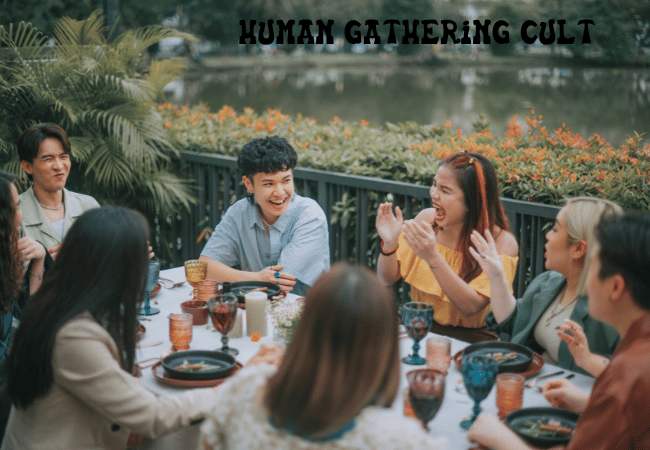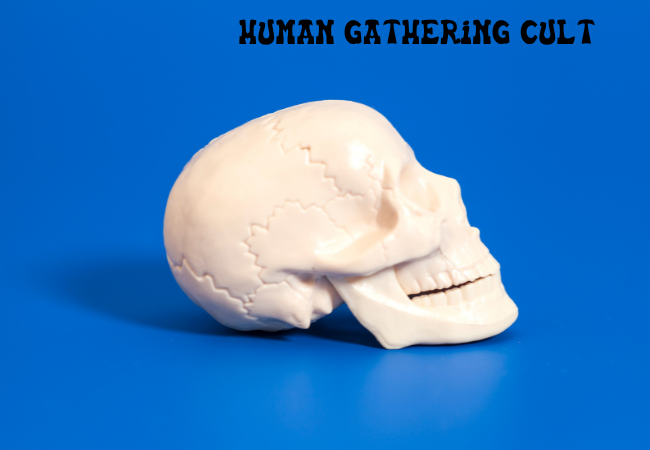The Enigmatic Dance: Unveiling the Human Gathering Cult

From the dawn of time, humans have found solace and strength in coming together. Historical gatherings, from tribal rituals around flickering fires to the grand festivals of ancient civilizations, have always been a cornerstone of societal bonds. These early forms of cults were not Human Gathering Cult sinister but sacred, spaces where myths were born, and traditions took root.
Defining the Modern Cult
So, what transforms a simple gathering into a cult? The term Human Gathering Cult often conjures images of secrecy and manipulation, but its essence is more nuanced. A cult is typically characterized by a group of people united by a common belief or goal, often guided by a charismatic leader. Psychological and sociological lenses reveal how such groups shape, and are shaped by, the human psyche.
The Elements of a Gathering Cult
At the heart of every gathering cult lies a trinity of elements: charismatic leaders, rituals and traditions, and unique symbols and language. These components create a cohesive identity, binding individuals into a collective.
Charismatic Leaders
The leader is often the magnetic force, a beacon around which the group orbits. Their charisma and vision draw followers who seek purpose and direction.
Rituals and Traditions
Rituals provide structure and continuity, transforming ordinary moments into sacred rites. These practices reinforce the group’s beliefs and foster a sense of belonging.
Symbols and Language
Symbols and language serve as the group’s unique code, a shared lexicon that distinguishes insiders from outsiders. They are the threads that stitch the group’s identity together.
The Psychological Magnetism
Why are we drawn to these gatherings? The answer lies deep within our psyche. Humans have an innate need for belonging, a desire to be part of something greater than themselves. This need is the fertile soil in which the seeds of a gathering cult take root.
The Power of Charisma
Charismatic leaders Human Gathering Cult power of persuasion, their words weaving spells that captivate and inspire. They offer clarity in a world often shrouded in uncertainty, and their followers, in turn, find solace in their guidance.
The Social Fabric
Gatherings shape the very fabric of our societies. They can be forces for good, fostering unity and common purpose, or they can become tools of division and control.
The Sense of Identity
Within the embrace of the group, individuals find a sense of identity. The collective becomes a mirror, reflecting and amplifying personal beliefs and values. Yet, this duality of individual and collective identity can also lead to a loss of self, as the group’s needs overshadow personal autonomy.
Modern Examples of Gathering Cults
In today’s world, the echoes of ancient gatherings resonate through various forms. Religious movements, political rallies, and the rise of social media influencers all bear the hallmarks of gathering cults.
Case Studies
Consider the rise of megachurches, where faith and spectacle merge to create a potent blend of spirituality and community. Political campaigns often harness the fervor of rallies to galvanize support, while the cult of celebrity on social media fosters a sense of intimacy and idolization among followers.

The Dark Side
Yet, the allure of Human Gathering Cult is not without its shadows. Manipulation and control can creep in, eroding individuality and fostering dependency on the group.
Breaking Free
Recognizing the signs of a harmful cult is the first step towards breaking free. Awareness, critical thinking, and support networks are essential tools in regaining autonomy and rebuilding a sense of self.
The Positive Potential
Not all gatherings are malevolent. When grounded in mutual respect and shared values, they can be powerful forces for good, fostering unity, community building, and collective achievement.
Healthy Gatherings
Healthy gatherings encourage diversity and inclusion, celebrating the unique contributions of each member while fostering a supportive and nurturing environment.
Conclusion
The dance Human Gathering Cult is one of duality, where light and shadow intertwine. By understanding the dynamics of gathering cults, we can embrace the light—unity, belonging, and shared purpose—while remaining vigilant against the shadows of manipulation and control. Let us step into this dance with open hearts and discerning minds, weaving a tapestry of connection that uplifts and empowers us all.
FAQs
- What differentiates a gathering from a cult?
- A gathering becomes a cult when it centers around a charismatic leader, has structured rituals, and uses unique symbols and language to create a distinct group identity.
- How can one identify a harmful cult?
- Signs include manipulation, loss of personal autonomy, pressure to conform, and an unhealthy dependence on the group or its leader.
- Are all religious groups considered cults?
- No, not all religious groups are cults. The distinction lies in the degree of control, the presence of a charismatic leader, and the impact on individual autonomy.
- What are the benefits of healthy gatherings?
- Healthy gatherings foster community, support, shared goals, and personal growth while respecting individual differences and promoting inclusivity.
- How can we promote positive social gatherings?
- By encouraging open communication, inclusivity, respect for individuality, and shared values, we can create environments where everyone feels valued and connected.



